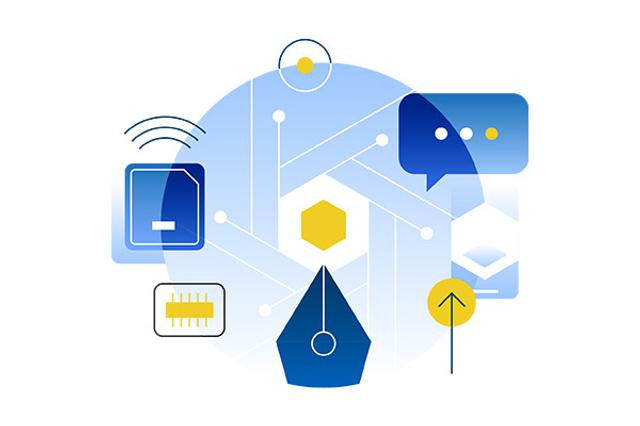Blog June 19, 2023
Learnings From the World’s Largest Healthcare Conference


Few Organizations are Addressing Root Problems, But They Could. Here’s How.
CapTech has always been passionate about using technology to support the healthcare ecosystem. So we jumped at the chance to learn, collaborate, and share insights with industry leadership at one of the largest healthcare conferences in the world.
Organized by the Healthcare Information and Management Systems Society (HIMSS), 2023’s conference drew over 40,000 people and featured a series of keynote addresses and information learning sessions that touted the latest healthcare innovations. But despite so much hype around new medical devices and software solutions that promised to “revolutionize the industry,” very few organizations were actually using these technologies to solve the root causes of the industry’s challenges, namely: high patient costs, poor patient experience, and a lack of holistic patient care.
Incentives and Interoperability Don’t Encourage Good Outcomes
There’s a reason the conference was so focused on treating the symptoms, not the causes, of the industry’s challenges: the healthcare industry’s value chain and profitability are not aligned to solving them.
Further complicating matters is poor interoperability. The capacity for individuals and computer systems to share, exchange, and access information is severely hindered by data privacy restrictions. Fortunately, strides are being made to improve interoperability – namely, more progressive sets of electronic healthcare data standards like HL7 and HL7 FHIR – but if we don’t realign incentives, it won’t make much of a difference.
What Good Healthcare Should Look Like: Holistic Improvement
For more than a century, healthcare has been a responsive model. A patient gets hurt or sick, a provider treats that specific issue, and the patient returns the next time something is wrong. While that may be considered good healthcare within the provider’s four walls, it typically doesn’t extend beyond their front door – likely because a responsive model doesn’t consider data from multiple sources along the healthcare continuum.
Good healthcare is holistic healthcare (also called “whole person health”). Rather than looking at separate organs or body systems, it treats the whole person, from their physical health to their emotional wellness, and considers multiple factors that either promote health or disease. This healthcare model exists on a continuum in which providers follow a patient from preventative care through medical incidents, rehabilitation, and maintenance.
When healthcare exists on a continuum, improving patient care, lowering healthcare costs, and reducing fraud and abuse are accounted for in the system. When providers are encouraged to take a long view of their patients’ health, they’re more likely to catch health issues before they become a problem, saving the patient and the provider time, money, and grief. Just as rising tides raise all ships, holistic healthcare improves all outcomes.
The Obstacles to Holistic Improvement: Interoperability and Incentives
During our three days at the HIMSS conference, one theme seemed to reign supreme: a focus on improving outcomes through value-based care.
Value-based care is a healthcare delivery model that bases a provider’s pay on the quality of care they provide and tends to reward efficiency and efficacy. While this may sound ideal in theory, it can incentivize providers to adopt a follow-the-money approach to healthcare and can reduce all of healthcare to a snapshot at a point in time on the continuum.
If a provider is encouraged to pursue efficiency, they tend to only treat what’s in their field of vision. Thinking of the “whole person” doesn’t fit this model. It can take longer and involve more resources and information sharing, and it might uncover other health issues that threaten their efficiency and efficacy. With profits hanging in the balance, it’s not difficult to see why a provider would ignore the long view and reject holistic care. And when providers don’t connect historical patient data, they fail to make insights and overlook avoidable health issues.
Not only is the industry not incentivized to share information, data privacy restrictions make it challenging. Even if providers want to adopt a holistic healthcare model, it’s extremely complicated to share healthcare-related data – let alone share it in real-time – with the necessary parties.
There are a few tactical – albeit complicated – solutions, the first of which is to provide clear and quantifiable incentives that align with all parties, including patients. Today, no one is truly working on behalf of the patient, who must take it upon themselves to be responsible for their health and wellbeing. But if a company can come forward with a value proposition that does put the patient first, it will actually revolutionize the industry.
How We Overcome The Obstacles With AI
Surprising no one, Artificial Intelligence (AI) was one of the conference’s hottest topics. While we heard few examples of how the industry plans on operationalizing AI to solve core challenges, the two most promising business cases concerned using AI in radiology departments and operating rooms to provide real-time analysis of care, such as understanding blood loss and predicting issues before they occur in a real-time surgical setting.
Outside of that, it seems like AI is mainly being relegated to data science to try to predict outcomes. While this is a hopeful start, we believe AI has greater potential.
When you embed AI and machine learning into your core system, you can automate findings and reliably improve patient experiences, outcomes, and out-of-pocket expenses. For example, to combat the communication latency, AI could be used to automate a majority of procedure authorizations for MRIs, in real time. Or, to improve patient experience, machine learning could instantly book the most cost-effective chest x-ray within a certain distance of a patient’s home.
And if providers were allowed to more freely and quickly share patient data, even more would be possible. AI and machine learning could enhance interoperability between providers, patients, and administration, by aligning health outcomes to share financial incentives.
Imagine how much more effectively we could leverage these technologies if the industry made a concerted effort to start solving its legacy technical debts, which may be inhibiting the speed of modernization? If we migrated the profusion of on prem systems to the cloud and cold move from batch data transfer to real-time – or even in time communication – we could radically transform the speed and accuracy of healthcare operations country-wide.
When Everyone Works Together, Everyone Wins
If we can refocus the healthcare model from responsive and value-based to holistic and continuum-based, outcomes for payers, providers, and patients will greatly improve.
When providers are encouraged to take the long view and consider patient health as a continuum, patient experience and care will reap the benefits. Providers will still stay profitable, as using new technologies in conjunction with shareable, real-time data will reduce inefficiencies and increase margins. And with healthier customers, payers won’t have to pay out as many claims.
We all have a responsibility to improve outcomes, so providers, vendors, policy makers, payers, and technology firms like CapTech must come together to solve the industry’s core challenges. Let’s realign incentives, continue working toward improved interoperability, and meaningfully integrate AI and machine learning into the healthcare ecosystem.



